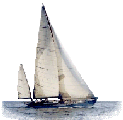
A potted History of DNS - Domain Name Service
The Internet protocol architecture was originally developed under DARPA (Defense Advanced Research Projects Agency) sponsorship to meet both military and civilian communication requirements, but given that US defence budgets played a major role and there was little commercial interest, the .MIL, .EDU, and .GOV have become de facto restricted to the US - other countries adding Country Codes (cc) as in .gov.ca, or using different solutions as in .ac.uk "academic United Kingdom" replacing .edu - although in earlier days, .EDU didn't require that the institution had to be US accredited (as it does now), so there were/still are a few .EDU domains outside the US.
1967: ARPAnet NIC (Advanced Research Projects Agency Network, Network Information Center) created at Stanford Research Institute (SRI) by Doug Engelbart; the network was small, users knew how to get around. Note: ARPA and DARPA were practically synonymous in the early days of the internet
1971: Host mnemonics invented by Peggy Karp (RFC 226)
1974: V. Cerfand and R. Kahn, "A Protocol for Packet Network Intercommunication", IEEE Transactions on Communication, led to the "DDN Protocol Handbook", NIC-50004, NIC-50005, NIC-50006, (three volumes) and "ARPANET Information Brochure", NIC-50003, both by SRI International in December 1985 which formalized a parallel civilian/military approach.
1981: over four hundred (Wow!) names and nicknames in the combined ARPANET-DCNET tables; so expansion was proposed by COMSAT's Dr David Mills to ARPA (ARPANET), COMSAT (DCNET), DCA (EDNET, WBNET), UCL (UCLNET, RSRENET, SRCNET), MIT (CHAOSNET), INTELPOST (INTELPOSTNET) (RFC799)
1982-84: Jon Postel, from Information Sciences Institute at the University of Southern California, and Zaw-Sing Su from Stanford Research Institute, developed the basis of what we know today (RFC822, 823) - Domain Name Service (DNS) as a proposal to deal with the increasing size of hosts table, to prevent the necessity of routing-map distributions and periodically downloaded hosts databases for the world, by the world.
1984: Jon Postel and Joyce Reynolds first proposed .MIL, but as there were no "country codes" it can be assumed that there was no intended monopoly for the USA (RFC920)
1987: proposal for ARPAnet to be expanded to EDU, MIL, and ARPA (RFC1034) - and by RFC1035 DNS was fully acceptable
1989: Tim Berners-Lee "invented" the World Wide Web with a line-mode user interface (named the "WWW" at CERN, Conseil Européen pour la Recherche Nucléaire)completed in late 1989.
1990: The Defense Communications Agency (DCA, now the Defense Information Systems Agency or DISA) split the ARPAnet into the ARPAnet and MILnet; soon after ARPAnet retired, with over 100,000 hosts on the network
1991: DISA awarded the administration and maintenance of DDN-NIC, which had been up until this point under the management of SRI to Government Systems, Inc. who subcontracted it to the small private-sector Network Solutions Inc. Tim Berners-Lee's World Wide Web was used on a minor network in March 1991. May 1991 was the first time that the information-sharing system using HTML, HTTP, and a client software program (www) was fully operational on the multiplatform computer network at the CERN laboratories in Switzerland.
1993: MILnet became integrated into the Defense Data Network (DDN)
1993: Marc Andreesen, National Center for Supercomputing Applications (NCSA) at Champaign-Urbana released Mosaic (pre-beta in March) - and in November (1st full release) the commercial explosion started. Gopher, which grew parallel to the web, fast became moribund.
1994: "top-level domain names" (TLDs) were the generic TLDs (EDU, COM, NET, ORG, GOV, MIL, and INT), and the two letter country codes from ISO-3166. It was considered extremely unlikely that any other TLDs would be created.
1995: Beginnings of the commercial over-exploitation of the namespace, e.g. the registration by Proctor & Gamble of ~200 domains having to do with their products and the symptoms thereoof (e.g. diarrhea.com), all contributing to the profitability of Network Solutions.
1996: proposal to introduce firm, .store, .web, .arts, .rec, .info, and nom. Start of domain name wars, privatization of the management etc. One immediately apparent problem the tension between trademark owners/domain owners/registrars and the domain name dispute resolution process.
1998: beginnings of marginal use of some country codes (.TO, .WS, etc), and the commercial abuse of others - e.g. .TV figured out that ccTLDs (Country Code Top Level Domains) could be a substantial source of revenue and began marketing them to entities with no connection to those countries - the 2-letter ones are still reserved (supposedly) for independently discriminatable geographical entities.
1999: .TEST .EXAMPLE .INVALID .LOCALHOST were "reserved". .CAN./LAN./SAN./WAN. and LOCAL used in intra/extra nets, and are occasionally seen publicly indicating a company name or LAN-use name on a promiscuous relay. LOCAL, USENET, BITNET, UUCP, and a couple others are commonly used as "tokens" for TLDs
2000: four new TLDs (.biz, .info, .name, and .pro) "unsponsored" i.e. market supply/demand, and three new TLDs (.aero, .coop, and .museum) "sponsored" or managed by narrow professional/business interests.
Recent: The Open Root-Server Confederation (ORSC) now makes a further 800 or so TLDs available - see http://dns.vrx.net/tech/rootzone/db.root - .CINEMA, .TEENS, .XXX, etc [more or less] ad infinitum...
| Home | Technical | Marine Page | Software | Contact us |
| January 11, 2003 | Copyright © 2003 Stormy Weather SoftWare Ltd |